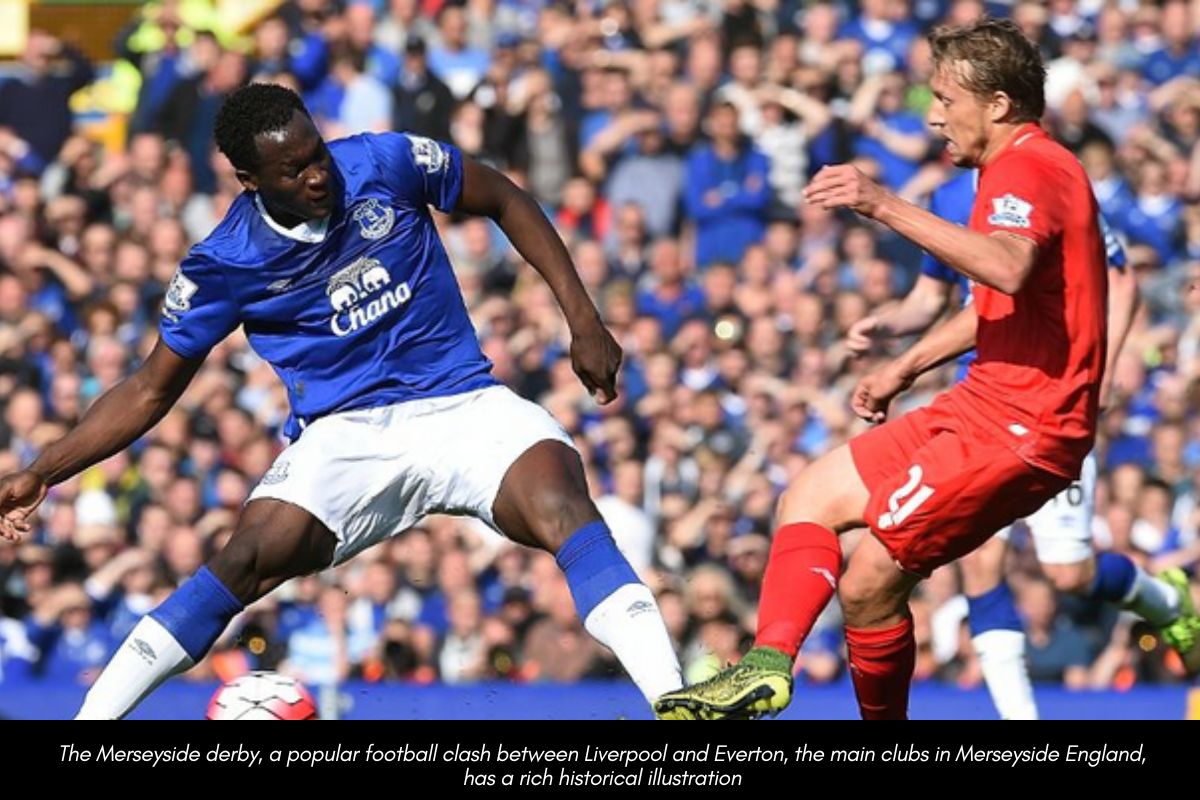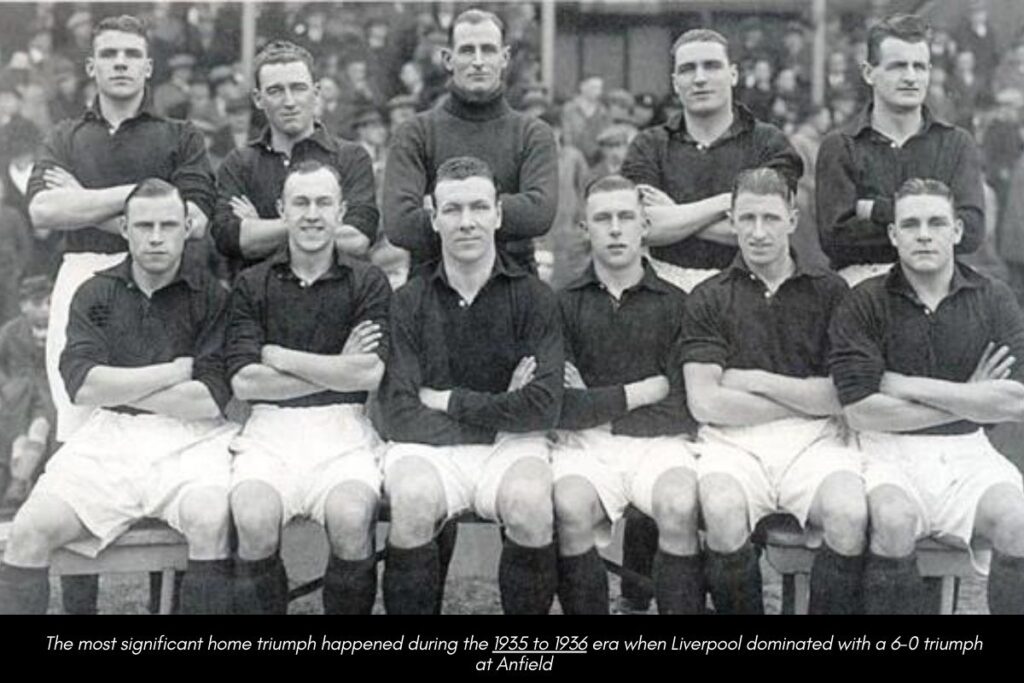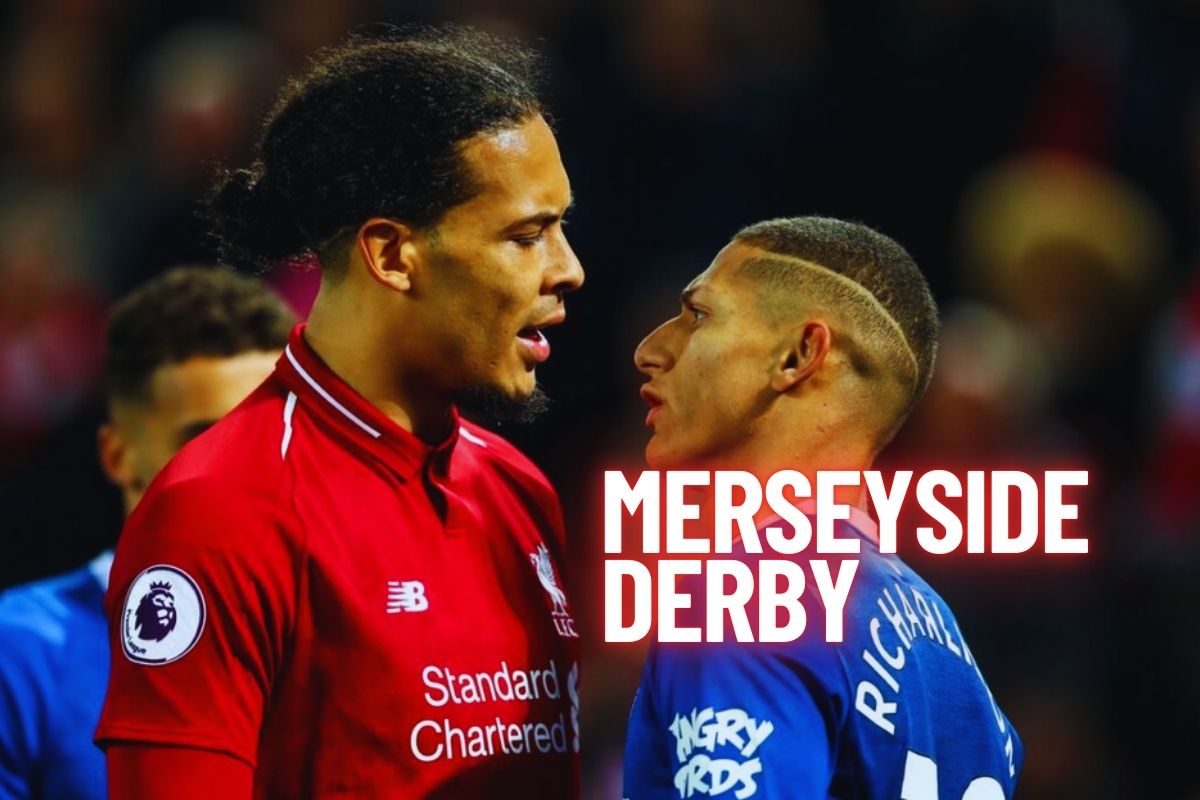The Merseyside derby, a popular football clash between Liverpool and Everton, the main clubs in Merseyside England, has a rich historical illustration. Situated in Liverpool, it encapsulates the uniqueness of being the longest-running top-flight derby in England, with its initial official top-flight match that happened on October 13th, 1894. Since the 1962 era, this fixture has been played consistently.
Moniker “The Derby”
The intensified rivalry is triggered in part by the close distance of the two clubs’ home grounds, located less than one mile apart and within the view of each other across the Stanley part. Stanley Park named after Frederick Stanley, 16th Earl of Derby, potentially motivated the moniker “The Derby”. Goodison Park houses Everton while Anfield is the home of Liverpool. Here is the story of why Everton went to Goodison while Liverpool remained at Anfield after a conflict.
Originally known as the friendly derby’, the Merseyside derby was featured with a large number of families in the city supporting both Everton and Liverpool. In comparison to many other competitors, it didn’t strictly enforce fan segregation. Significantly, the 1984 Football League Cup final at Wembley earned the nickname ‘friendly final’ due to a blend of sections and supporters of both clubs uniting to echo “Merseyside”. The 1986 FA Cup final saw the same scenes of loyalty.
Nevertheless, since the mid-1980s, the competition has intensified both on and off the stadium. It had gained a reputation for being one of the most hotly contested games, marked by a raised number of red cards surpassing any other match since the start of the Premier League.
Friendly derby
The unique nature of the Merseyside derby is hugely attached to the rarity of violence between the fans of Liverpool and Everton. While scenes have happened over the years, they pale in comparison to the tumultuous incidents seen in the main football games across England and around the world. The derby has retained a reputation for a special camaraderie.
One major key aspect contributing to the relatively peaceful change is the close geographical proximity of the two clubs as we saw earlier at the beginning of this article. They come from the same area within the city – something that’s uncommon for fans to be not just friends but close friends or surprisingly the same members of the family. In the days leading up to the match, tensions may pop up among siblings, with brothers and sisters engaging in temporary moments of silence. However, the competition seldom triggers physical altercations in the streets.

The outcomes of the Hillsborough disaster also contribute significantly to designing the character of the Merseyside derby. The city of Liverpool, feeling a sense of repression and neglect from the authorities, united in grief after the tragic incidents of 1989. Although Liverpool supporters bore the brunt of the calamity, the whole city thought it as yet another example of being mistreated.
Typically, many Everton supporters shared profound links with people who lost their lives or were injured on that fateful moment, fostering a sense of felt grief and solidarity that goes above the normal traditional competition. Such a collective experience has so far contributed to a special atmosphere of empathy and understanding within the Merseyside derby, setting it apart from other matches.
Perception in the Modern Day
Over the past decade, a tangible trend ensued in the dynamics between Liverpool and Everton Football Clubs. Liverpool consistently assumed the role of favorites in almost every match while Everton has found itself ensnared in a self-destructive cave, perennially contending against relegation without being swallowed by it. Jurgen Klopp’s leadership tenure has tangibly contributed to Liverpool’s victories in recent eras, cementing their status as a formidable club. This stark contrast in trajectories displays Everton as the underdog in the existing phase of the derby’s illustrated history.
Since its launch in the year 1894, the Merseyside derby has unfolded 243 rounds. Liverpool has emerged triumphant in 99 games while Everton has gotten 67 victories, leaving 77 encounters deadlocked in draws. The numerical results mirror Liverpool’s historical reign in the fixture. This has become a trend that has consistently solidified in recent years, amplifying the perceived favoritism towards Liverpool in their games against the Goodison club.
Merseyside Derby Great Milestones
The most significant home triumph happened during the 1935 to 1936 era when Liverpool dominated with a 6-0 triumph at Anfield. Everton’s most substantial away win occurred in the 1982 and 1983 era, with a tangible 0-5 win against Liverpool. Conversely, Everton got a 5-0 victory at Anfield in the course of the 1914 and 1915 seasons. The greatest scoring game in Merseyside derby history was revealed during the 1932 to 1933 era, causing a thrilling 7-4 triumph for Liverpool at Anfield Stadium.

Neville Southall, a stalwart for Everton, holds the record for the most occurred appearances in the Merseyside derby. This amassed a total of 41 matches. Ian Rush pops out as the top goal-scorer in the derby, netting an impressive 25 goals for Liverpool. The last milestone is about the historic record of attendance seen at Goodison Park in 1948. At least 78,500 fans turned up marking a pivotal moment in the legacy of the Merseyside derby.
Conclusion
Merseyside stands out as a captivating testament to the rich story and passionate soccer tradition entrenched in the city of Liverpool. Beyond the jurisdictions of normal gaming competition, the clash between Everton and Liverpool goes beyond the space of football, weaving a narrative of community, shared experiences, and persisting camaraderie.
The derby’s special trait is underscored by a tangible absence of widespread violence among the fans. The close geographical distance between the two teams boosts an atmosphere where friends and even family members can be found on the opposing sides. You can imagine how the intensity of the rivalry seldom spills into the streets. This unique characteristic sets the Merseyside derby separate from its counterparts, crafting a realm where kinship prevails over animosity.
Over its 243 encounters since 1894, the derby has seen historical milestones, dramatic triumphs, and remarkable performances. Merseyside derby holds the aspect of soccer as a unifying force, resonating deeply with the passionate fan bases of both Everton and Liverpool. The Merseyside derby isn’t merely a soccer fixture; it’s a celebration of culture, persistence, and the enduring spirit of the nice match.
🔴 Find the Latest News on Player Ratings | Transfers | Prematch | Postmatch
Stay tuned for more updates on Liverpool FC Times and Stories. Your thoughts are always welcome in the comments section. Thank you for your continued support!
YNWA (You’ll Never Walk Alone)!
The Liverpool FC Times Team
LiverpoolFCTimes.com
